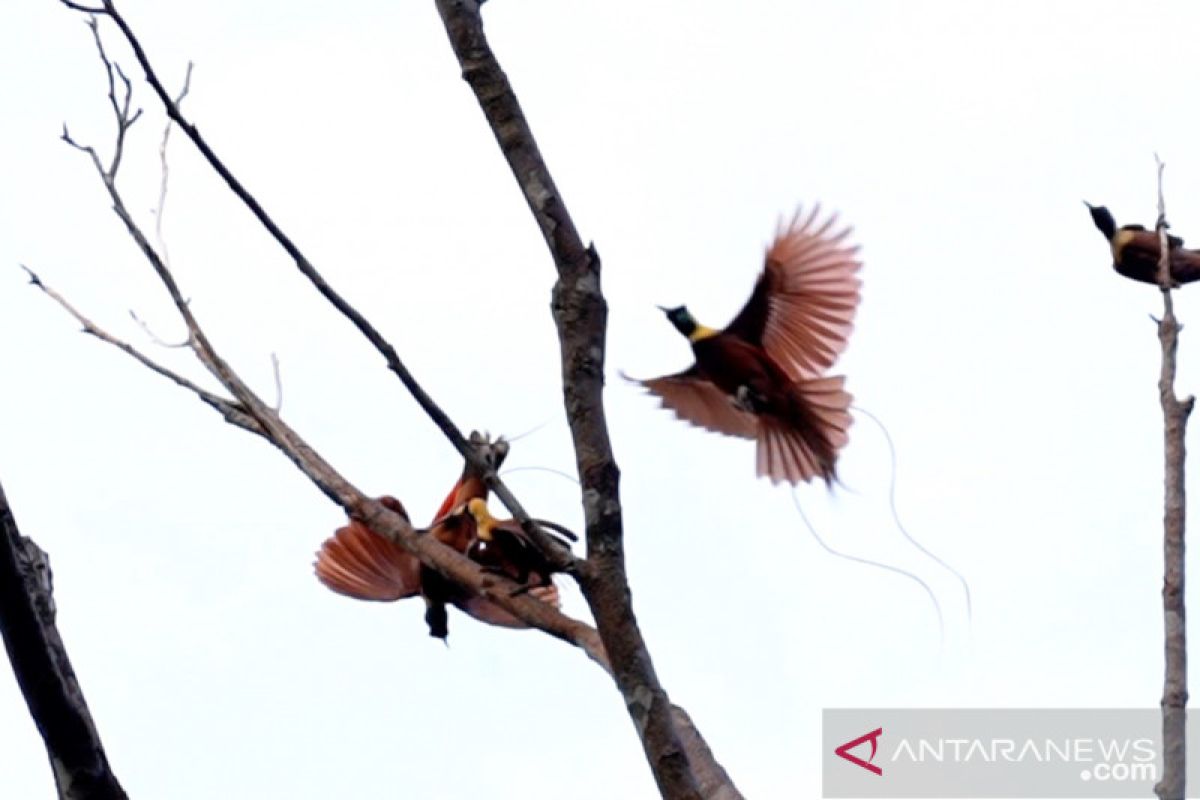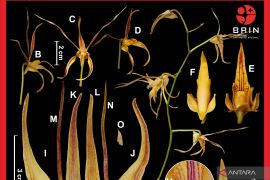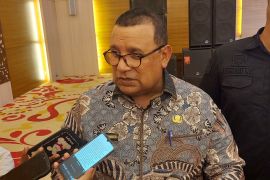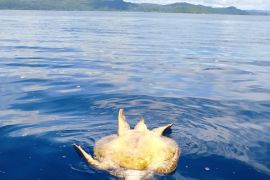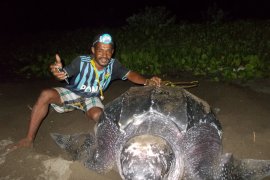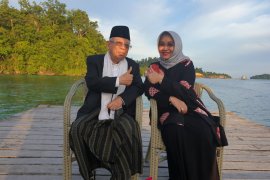Let the birds live free on Waigeo island; when people want to see them, they can come to Raja Ampat.Sorong, West Papua (ANTARA) - Besides its breathtaking underwater scenery, the Raja Ampat district of West Papua province also possesses forests that a variety of birds and animals are endemic to.
Based on government data, there are at least 258 species of birds in the Raja Ampat forest area, including six of 10 species endemic to Papua.
The bald cenderawasih (Cicinnurus respublica), red cenderawasih (Paradisaea rubra), Maleo waigeo (Aepypodius bruijnii), Raja ampat pitohui (Pitohui cerviniventris), Cekakak pita kofiau (Kingfisher or Tanysiptera ellioti), and Kehicap kofiau (Monarcha julianae) naturally inhabit the Raja Ampat area.
The gorgeous cenderawasih birds, or birds-of-paradise, attract bird lovers, photographers, and nature activists, as well as hunters.
Hunters used to catch the birds to preserve them or sell them to collectors.
The head of the Warkesi Forest farmers group, Alvian Sopuiyo, used to hunt cenderawasih birds earlier.
"I hunted red cenderawasih birds, preserved them in formalin, and sold them dead," Sopuiyo said.
"I do not remember any more about how many cenderawasih birds I shot dead with an air rifle. The last instance I recall was I bought a 20-liter formalin, and used it all for the birds, then sold them," he added.
According to Sopuiyo, one preserved cenderawasih bird can fetch Rp500 thousand. However, he claimed that the price was too little for him.
He also said that hunting and selling birds made him unrestful as he had to constantly hide from police and officers from the conservation agency.
"I felt I had sinned because a lot of people had campaigned to protect the cenderawasih birds for the next generation, for our grandchildren, while I hunted them for temporary money," he remarked.
Related news: The World cruise passengers to observe cendrawasih in Raja Ampat
Related news: Meet Waisimon, protector of the cenderawasih and forests
Involving communities
The West Papua Natural Resources Conservation Center has been making efforts to protect and nurture the endemic birds by involving residents living around the forest area.
As part of endeavors for protecting endemic birds, the center has facilitated and established the Warkesi forest farmers group and a center for tourism development for red cenderawasih observation at Warkesi forest.
The Warkesi forest farmer group is involved in maintaining the forest that is aimed for tourism development. The forest spans three hundred hectares in the buffer zone of West Waigeo Nature Reserve.
Sopuiyo, as the head of the group, affirmed that tourism activities such as red cenderawasih sightings have been carried out since the beginning of 2018.
The birdwatching tourist activity has generated income for the farmer group, he said.
Each visitor seeking to enter the forest area to observe the cenderawasih birds has to pay a fee of Rp250 thousand, and the revenue goes to the group, he informed.
According to Sopuiyo, since tourism activities were opened in 2018, at least one thousand visitors, both domestic and foreign, have entered the forest as of 2021.
He said if tourism activities had not been suspended because of the COVID-19 pandemic, the number of tourists in the forest area could have been higher.
Even though the income from tourism is not significant, Sopuiyo said he feels calmer and happier because he can obtain money without having to run and hide from the law enforcement authorities or forest rangers.
Birdwatching at Warkesi forest has given him a new career, he added.
Like him, people who used to hunt birds earlier, now support efforts to nurture the cenderawasih birds and develop the forest for tourism, he said.
"There are 30 people who are involved in the Warkesi forest farmer group. They choose to take care of the area and conduct patrols routinely, as well as do farming to survive," Sopuiyo expounded.
He said that he became interested in supporting conservation and tourism activities after he was invited by a birdwatching tour guide, Edwin Dawa, to join an awareness campaign on wildlife conservation.
"Now, one cenderawasih bird who flies free in the Warkesi forest can be witnessed by the whole world," he remarked.
According to Dawa, the tour guide who is also a part of the Warkesi forest farmer group, the bird observation activities have developed and attracted many nature lovers and tourists with specific interests.
"We have been consistent in taking care of the Warkesi forest because its area is like a plate for us. That means, if there are tourists, there is money for food," he said.
In addition to carrying out conservation efforts, the group is cooperating with the owners of resorts and accommodations in Raja Ampat to promote birdwatching, he informed.
In the Warkesi forest, tourists can observe the red cenderawasih, bald cenderawasih, and other species of birds such as kakatua jambul kuning, kakatua raja, nuri, and maleo waigeo, he said.
Compared to the red cenderawasih that can be seen in the morning and afternoon time, the wild bald cenderawasih birds are rarely sighted, he observed.
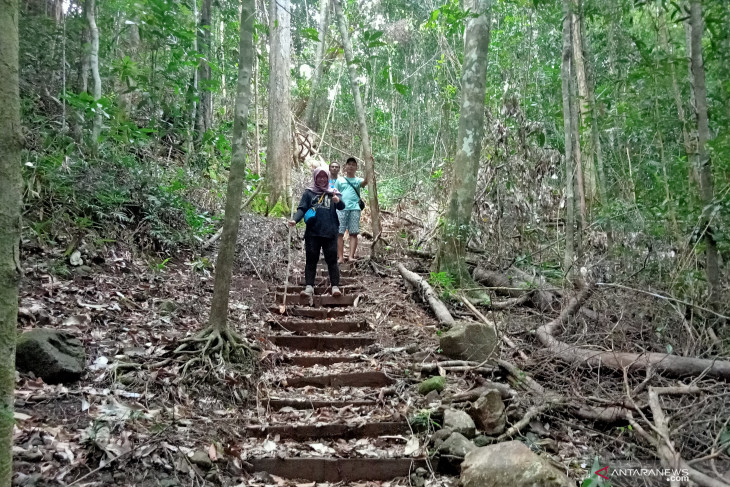
Monitoring efforts
The West Papua Natural Resources Conservation Center (BKSDA) is mentoring the Warkesi forest farmer group to manage the cenderawasih birdwatching tourism business as well as enhancing their knowledge and skills for maintaining the area as a tourist destination, West Papua BKSDA head, Budi Mulyanto, said.
Members of the forest farmer group are involved in patrols around the forest, he informed.
"This smart patrol is important because it involves the people, making them care about the forests they manage," he said.
Moreover, BKSDA is helping the group in growing businesses that support tourism, such as the creation of souvenirs and culinary items, he added.
"If the members' economy improves, they will be consistent in nurturing the forest that is their life source," Mulyanto explained.
West Papua BKSDA technical head, Tasliman, informed that tourism activities have brought benefits and enhanced the local people's economy.
According to him, bird observation in the Warkesi forest can serve as an example of conservation through the economic enrichment of people.
"Raja Ampat is a world tourist destination, and the red cenderawasih bird is a Waigeo endemic animal. This bird is unique and does not exist in other places. This biodiversity must be kept alive," he remarked.
Furthermore, the Flora Fauna International (FFI) conservation agency that is conducting the Raja Ampat program is also supporting the Warkesi group's activities.
FFI Raja Ampat program manager Andhy Priyo Sayogo said that the agency has been training tour guides for the group.
The agency has also trained the group members in conducting patrols as well as monitoring the red cenderawasih bird population along with West Papua BKSDA, he informed.
The West Papua BKSDA keeps track of the bird population regularly. Inspection is done through the sampling method at several points at Waigeo forest, he stated.
Based on an analysis in West Waigeo Nature Reserve, there has been a growth in the red cenderawasih population in the last five years, he informed.
According to him, in 2015 and 2016, there were only ten birds per hectare. In 2017, the red cenderawasih population grew by one, and the total rose to 15 in 2018 and 2019.
Tasliman also urged people to support efforts for conserving the endemic bird.
"Let the birds live free on Waigeo island; when people want to see them, they can come to Raja Ampat," he remarked.
FFI Raja Ampat program manager Sayogo also said he hoped that Raja Ampat residents would continue nurturing the Warkesi forest and cenderawasih birds, which are called birds-of-paradise because of their heavenly beauty.
Related news: Five giant leatherback turtles lay eggs on Raja Ampat's Yenbekaki
Related news: Taking a peek at cenderawasih in its natural habitat
Translator: Ernes K, Kenzu T
Editor: Sri Haryati
Copyright © ANTARA 2021
